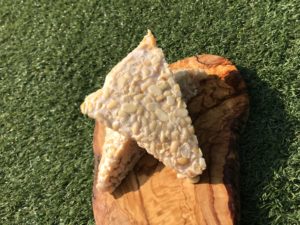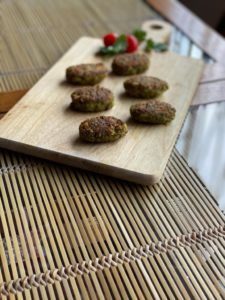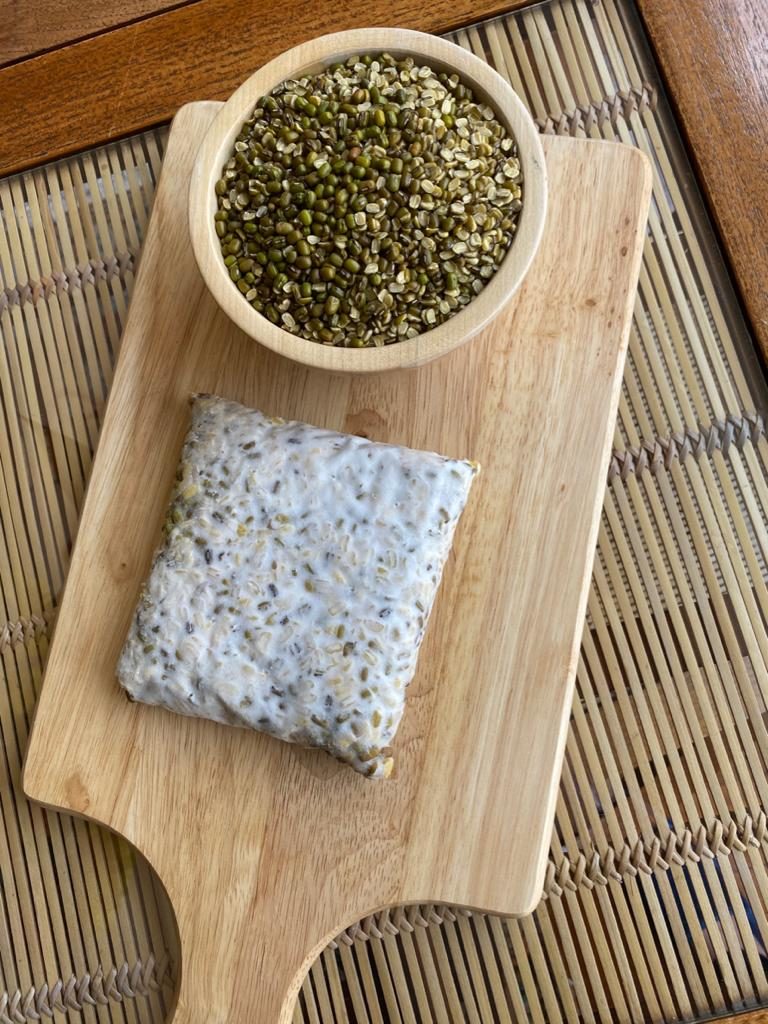Blog
Tempeh – A Nutrition Powerhouse
By Punam Chopra, Founder of SpiceBox Organics
Tempeh is an indigenous fermented soya bean product that predates to (last I checked) the 17th century. A variety of fermented foods exist today like, pickles, krauts, cheese, apple cider, and soya beans that are prevalent among many cultures and have different forms of fermentation.

But my favourite of all is Tempeh- a proud product of Indonesia where soya beans are fermented to create Tempeh or as they call it “Tempe” which is rich in nutrients and active substances.
I tried tempeh for the first time at Angelica’s Kitchen in New York city about 20 years ago and I was hooked! The “wee dragon bowl” at this vegan institution was my favourite meal, and comprised of grilled tempeh cubes, dark green leafy kale, root vegetables, sea vegetables, brown rice and a delicious parsley tahini dressing. The tempeh was nutty in texture with a distinctive flavour that appealed to my senses instinctly.
I recently visited a friend in Jakarta and with her help got to explore and taste tempeh in many Indonesian restaurants and markets. A national speciality, tempeh is served in stir-fries, curries, sides, or as chips and was delightful in taste and flavour. This visit inspired me to start fermenting my own homemade tempeh and producing it for the community. What I realized was that tempeh can also be made from any pulse like moong beans for example, or by combining 3 different grains as well.
Traditional tempeh is made by using cooked and dehulled soya beans. Like sourdough, it requires a starter culture that is added to the beans. It is then packed in perforated bags and incubated at 30-31 degrees Celsius for about 24-48 hours until the beans are bound together by the mycelium. The tempeh is then ready to cook. The Tempeh has a nutty like flavour and chewy texture which has made it a popular and versatile product.
Since I now follow a 90% vegan diet, tempeh with its nutrition power is a great addition to my meals. I find it highly versatile and have made various dishes and curries. The important factor is that it is not a very expensive product and provides one with so much health value that I recommend this as a must-have in all homes especially for those following a vegan or vegetarian food lifestyle.
Tempeh, not only improves gut health but also provides enhanced nutrition that comes from the fermentation process. It is a complete source of protein, fatty acids, B 12 vitamins and is cholesterol-free. It increases levels of calcium and potassium, is low in saturated fat, and has only 5% of carbs per serving. It is high in soluble fibre, a good source of folic acid and high in isoflavones. What is even more interesting is that it not only improves digestion but makes the nutrients easier to assimilate.
My favourite cooking style for tempeh is steaming the block for 5 mins, cutting into cubes and stir frying them with some coriander, turmeric and garlic ginger paste. But recently the moong bean tempeh kebabs was a hit among my friends and family.
Ingredients 
1 block organic moong bean tempeh (thawed)
1 clove garlic – grated
1 shallot
1 green or red chilli chopped fine
2 tbs fresh coriander, mint, or kafir lime leaves
1 tsp- coriander powder
1/2 tsp turmeric powder
Himalayan pink salt (to taste)
Black pepper (to taste)
Organic sunflower frying oil or virgin coconut oil
Preparation
– Crumble the Tempeh in a mixing bowl
– Hand grind garlic, chilli, shallot and fresh herbs until coarse ground (no blending)
⁃ Mix the ground spices into the Tempeh
⁃ Add coriander powder, turmeric, salt and pepper
⁃ Form oval-shaped kebabs and place on a tray
⁃ Shallow fry each side carefully in a pan until golden brown on each side
(Alternately you may choose to bake after lining the tray with oil and sprinkling the kebabs and bake on 220 degrees for 15-20 mins)
⁃ Serve warm as a starter or canapé



Highly informative and intresting.
Will try to ferment soyabeans.
Highly informative and intresting.
Will try to ferment soyabeans. Thanks
I’m so impressed! The history and healthy properties—also the personal experience with tastings makes the article interesting. Ahhhh, Angelica’s—they had the best tempeh! Your recipe made me hungry 🙂